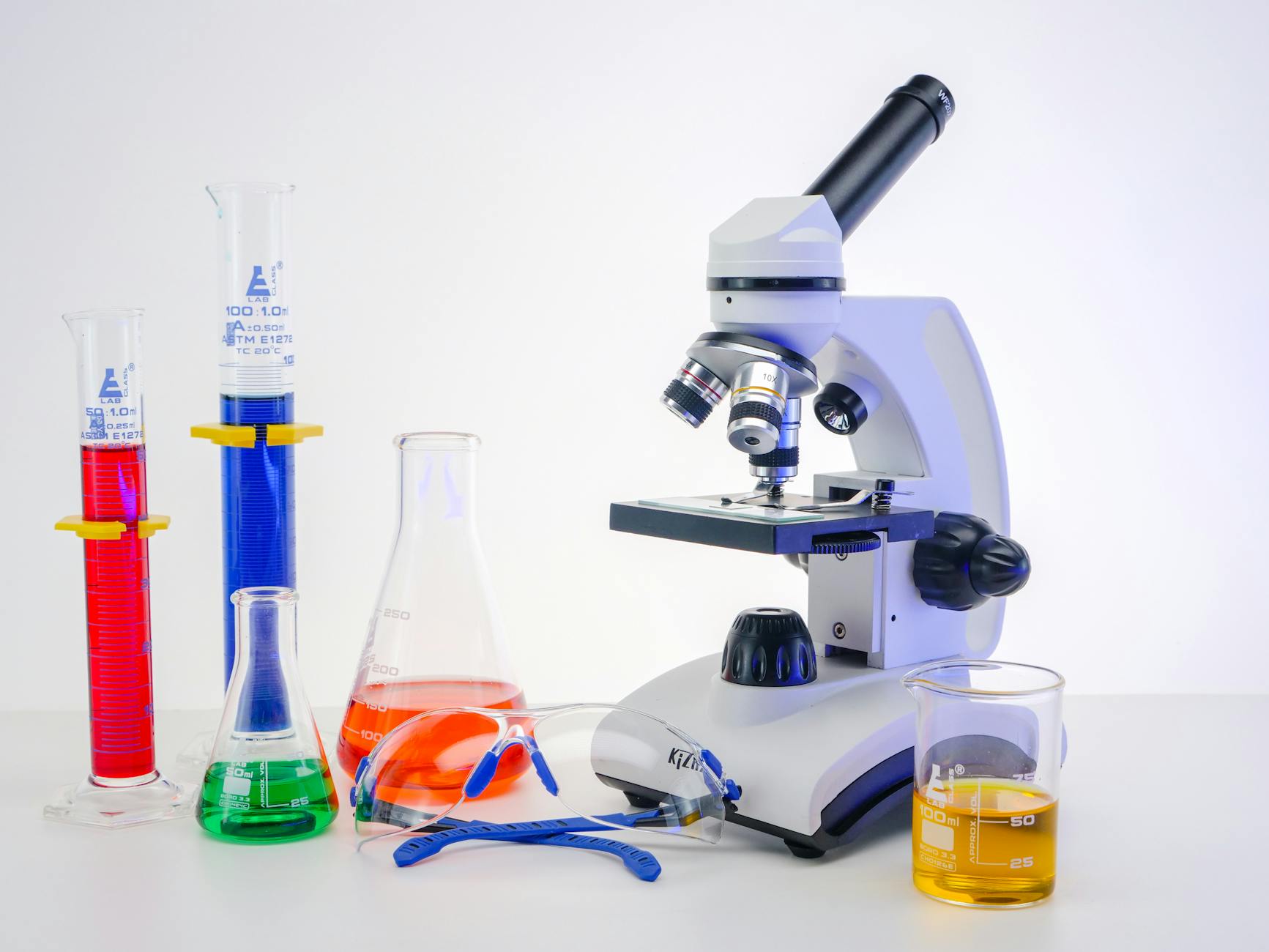Hi, welcome to this biology class as we discuss the uses of microscope, the meaning and the different types and parts of microscope.
Table Of Contents
- Meaning of microscope
- Types Of microscope
- Parts of a microscope
- Uses of microscope
- Revision Questions
See Also
Definition Of The Microscope
Meaning: The microscope is an instrument used in the laboratory to observe tiny structures of living organisms which cannot be seen or observed by naked eyes. Organisms which can only be seen with the aid of microscope are called microscopic organisms.
When very small objects and tiny living things are observed through the microscope, they become magnified or enlarged and the detail structures can be seen properly. The study and uses of microscope will enable us to observe and identity tiny living things and the structure they are made of, especially the cell.
Types Of Microscope
The various types of microscope include:
- Compound microscope
- Light microscope
- Electron microscope
- Hand lens.
The hand lens is the simplest and the most commonly used magnifier in the laboratories for magnifying tiny living things and other objects.

Parts Of A Microscope
The microscope is made up of many parts which includes:
- The plane mirror: The plane mirror helps to direct light rays to the object for proper lightning so that the object can be seen properly.
- The base: This part represents the metallic based which enables the microscope to rest properly on the table so as to prevent it from falling.
- The stage: This part represent where the object to be examined is placed.
- Chips: These are tiny structures which help to hold the object for proper viewing.
- Handle or arm: This part is used to carry the microscope.
- Condenser: The condenser consists of a powerful lens which condenses the light rays coming from the plane mirror and directs them to the object under observation.
- The rotatory nasal piece: This part is where the objective lenses of varying magnifications are fitted. It can be rotated in order to turn on the objective lens with a better magnification.
- The eye piece lenses: This part represent where the observer places his eyes when viewing the object through the microscope.
- Adjustment knobs: These are made up of two components. These are (a) Coarse adjustment knob: This is used in bringing the object into proper focus (b) fine adjustment knob: This is used to ensure a cleaner view by sharpening the focus object.
- The objective lens: This lens which is usually placed slightly above the object is used for magnification.
How To Use The Microscope(uses of microscope)
1. Bring out the microscope gently where it is stored with the aid of its handle.
2. Clean the microscope gently with soft lining or cotton wool. Parts to be cleaned include the eye piece, objective lenses, condenser and other parts of the microscope.
3. Adjust the plane mirror in the direction of light in order to catch and direct the rays of light into the microscope.
4. Where necessary, open the lid of the condenser.
5. Place the slide of the object to be viewed on the stage and use the clip to hold it properly.
6. Proper adjustment is made on the objective lens so as to rest on the slide carefully to avoid cracking of the slide or shaking of the object to rotating the nasal piece, starting with the low power lens, then increase to high power lens.
7. Adjust the coarse knob to bring the object into focus.
8. When the object is brought into sharp focus, the fine adjustment knob is then used to make the object sharper for a clearer view.
9. The object or specimen is then examined carefully and all observations recorded.
10. The object or specimen is then translated into diagram using the biology practical notebook.
The biology teacher is expected to guide and demonstrate the uses of microscope to student in the laboratory.
Revision Questions
- what is a microscope?
- Explain briefly the uses of microscope.
- Name the parts of myicroscope listed above.
- State 4 types of microscope.
